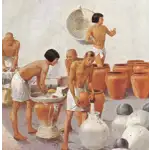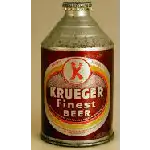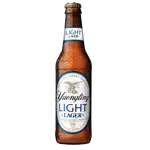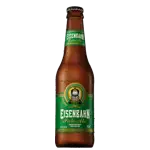The Invention of the First Beer

The first beer in history was created by accident around 6000 BC in the Sumerian Civilization. A peasant left his grains outdoors, where they were soaked by the rain and then exposed to the sun, starting a fermentation process that resulted in a previously unknown liquid. Upon tasting the liquid with a peculiar aroma, the peasant discovered that it was pleasant, without knowing that he had created the first beer in history.
Beer in Antiquity

The Sumerians, inhabitants of Mesopotamia, were the first to create civilizations and believed that beer was a gift from the goddess Ninkasi. According to legend, beer magically emerged from a mixture of water and barley, transforming into a golden liquid. The Babylonians also honored beer in their writings. They established the Code of Hammurabi, one of the first legal codes, which regulated the production, quality and distribution of beer. The code imposed severe punishments for poor quality beer, established that innkeepers would be paid in barley and regulated the quantity of beer to be served according to the quantity of barley received.
Test yourself with one of these challenges 👇
Discover some interesting facts about Beers
Beer in Egypt and Rome

In Ancient Egypt, beer had social importance, being used in offerings to the dead and as payment for workers. Brewers were highly valued and beer was seen as a source of nutrition to keep the population healthy and productive, with different varieties for all ages. The Romans inherited the knowledge of beer from the Egyptians and spread it throughout their conquered territories, naming it "Cerevisia" in honor of the Goddess Ceres.
A Journey Through Flavors and Styles

Beers have different families and types with unique characteristics, influenced mainly by the yeast used in the manufacturing process. This means that each style of beer has its own distinctions in flavor, color, alcohol content and other aspects. The analogy is made with states of a country. The differences between beer families are determined by the specific ingredients and processes used in their production.
Lager family beers use yeast that ferment slowly at lower temperatures

Lager family beers use yeast that ferment slowly at lower temperatures, generally between 6°C and 12°C, which differentiates them from other beer families. There are several subdivisions, including Light Lager, Dark Lager and Bock, each with specific characteristics, such as hop flavors, colorings and flavor notes, with Light Lager being lighter and drier, Dark Lager with sweet notes and Bock with flavor. toasty and less hops.
Ale family beers use top-fermenting yeast

Ale family beers use top-fermenting yeast, which settles at the top and ferments at higher temperatures between 15°C and 24°C. They are fuller-bodied and have a wide variety of flavors. Subtypes include Pale Ale (lighter with colors ranging from pale gold to dark copper and feature a wide range of flavors), wheat beers (refreshing, have low bitterness and flavors such as chocolate, banana, clove, tutti-frutti and spice.) , Porter (dark, smooth and with a coffee and caramel flavor) and Stout (similar to Porter, but with a higher alcohol content and notes of chocolate and coffee).
Lambic family beers, originating from Belgium

Lambic family beers, originating from Belgium, undergo spontaneous fermentation with wild yeasts and other microorganisms, resulting in a characteristically bitter flavor and high acidity. They ripen in wood and have a clear, clear color. There are several categories within this family, including Gueuze (mixture of young and old Lambic), Faro (less acidic, with added brown sugar and cane molasses), Fruit Lambic (with added fruits such as raspberry, cherry and apple) and Straight Lambics (pure, strong, dry and acidic, served immediately after maturation).
Test yourself with one of these challenges 👇
HOME





